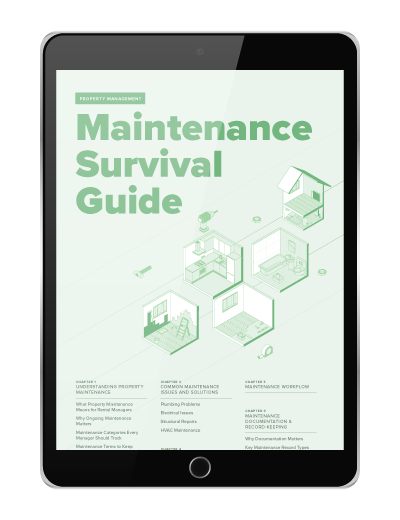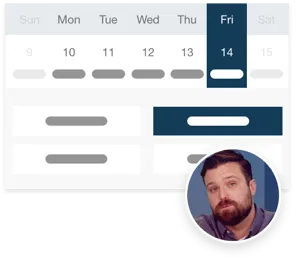Effective property management maintenance services go far beyond just fixing problems when they arise. A proactive, well-organized maintenance strategy can prevent costly repairs, reduce tenant complaints, and ultimately increase the longevity and value of the property.
In this blog post, we’ll explore how implementing a comprehensive property management maintenance program can not only keep your properties in top shape but also make your operations more efficiently, keep renters happy, and save your business money every step of the way.
The Key Elements of Effective Property Maintenance Services
A successful property maintenance program is multi-faceted. It includes a combination of routine inspections, preventive maintenance, emergency repairs, vendor management, and technology integration. Each element plays an important role in reducing risks, saving costs, and improving overall service delivery.
1. Routine Inspections
Routine inspections are a core component of any property maintenance plan. These inspections typically happen seasonally or at regular intervals and serve as an opportunity to spot minor issues before they turn into expensive, disruptive problems.
For instance, checking the roof for wear and tear before a heavy winter storm or inspecting the plumbing to avoid leaks during colder months can save significant repair costs. Routine inspections also provide an opportunity to assess general wear and tear, such as flooring, walls, and appliances.
2. Preventive Maintenance
Preventive maintenance includes regular servicing of key building systems, such as HVAC, plumbing, and electrical systems, to guarantee everything functions smoothly and to extend the lifespan of these systems.
For example, HVAC servicing at least twice a year helps maintain efficient heating and cooling, reducing energy costs while minimizing the chance of sudden system breakdowns. Plumbing checks can help avoid water damage from leaking pipes, while regular roof maintenance prevents leaks and potential structural damage.
Read More: A Must-Have Property Management Preventive Maintenance Checklist to Avoid Costly Repairs
3. Emergency Repair Services
Despite your best efforts to prevent issues, emergencies can still happen. Whether it’s a broken water heater, a power outage, or a burst pipe, these urgent repairs need to be handled quickly to minimize inconvenience for tenants.
Having an emergency repair service in place, ideally with after-hours availability, can reduce the downtime tenants experience during an emergency. The quicker these issues are addressed, the more satisfied tenants will be, which can translate to higher retention rates.
Read More: Understanding and Managing Rental Property Maintenance Emergencies
4. Vendor and Contractor Management
Property maintenance involves working with a network of contractors, vendors, and service providers to perform specialized tasks. Proper vendor management is key to maintaining efficiency and quality control. When selecting vendors, focus on their reputation, experience, and ability to meet deadlines and budget expectations.
Regularly assessing vendor performance and maintaining clear communication guarantees that all tasks are completed to your standards. Establishing long-term relationships with reliable vendors can also lead to better pricing and faster response times when you need help.
Read More: The Ultimate Property Management Vendor Guide
5. Technology Integration
Technology can significantly enhance your property maintenance management. Maintenance management software such as Buildium allows you to track work orders, monitor service progress, store maintenance records, and communicate with tenants and vendors more efficiently.
Platforms like these often feature real-time updates, which means you can address issues before they escalate. Moreover, the ability to pull up maintenance history for each unit allows you to make informed decisions about ongoing and future service needs.
Benefits of a Well-Managed Maintenance Service
A well-structured maintenance program benefits everyone involved in property management, from property managers to tenants to property owners. Let’s look at how it positively impacts each group.
For Property Managers
Managing a large property portfolio often means juggling a high volume of maintenance requests. An organized maintenance strategy simplifies workflows, reduces the number of emergency repairs, and helps with cost predictability. With a robust system in place, you can allocate time and resources efficiently, keeping your properties in excellent condition without feeling overwhelmed.
Consider this scenario: A property manager who implements routine inspections and preventive maintenance could potentially reduce the number of emergency repair calls significantly. This not only lowers stress but also helps maintain smoother operations.
For Tenants
For tenants, maintenance is directly tied to comfort and convenience. A property with fast, reliable service fosters a positive living experience, which can boost tenant retention.
Tenants appreciate when issues are addressed quickly, whether it’s fixing a broken appliance or dealing with a plumbing issue. A proactive approach, such as offering 24/7 emergency maintenance services or implementing a tenant portal to submit requests, builds goodwill and trust. This can also lead to higher renewal rates and fewer vacancies.
For Property Owners
From an ownership perspective, well-maintained properties have a higher long-term value. Regular maintenance reduces the likelihood of expensive repairs, which in turn extends the lifespan of the property’s key systems and infrastructure.
Moreover, well-kept properties are more attractive to tenants, which can lead to higher rents and reduced vacancy rates. The return on investment for property owners improves significantly when maintenance costs are predictable, and the property remains in top condition.
For example, imagine a commercial property owner who regularly invests in HVAC servicing and roof inspections. This proactive approach helps avoid costly replacements and reduces tenant complaints, ultimately maintaining both tenant satisfaction and the building’s value.
Common Challenges with Property Maintenance Services and How to Overcome Them
Even the best maintenance programs face challenges. Here are some of the most common issues property managers face and how to address them.
1. Managing a High Volume of Work Orders
When managing multiple properties, the number of maintenance requests can quickly pile up. To manage this effectively, consider using property maintenance software that tracks requests, assigns tasks, and provides real-time updates. Centralizing your tasks in one system reduces confusion and allows you to prioritize the most urgent issues first.
2. Tracking Vendor Performance
Not all vendors are created equal, and ensuring that your contractors deliver quality service can be difficult. To mitigate this, create a performance evaluation system that allows you to assess vendors after every job. Regularly review contracts, negotiate terms for better service, and always keep an eye out for new, more efficient service providers.
3. Balancing Budgets for Maintenance and Repairs
Finding the balance between preventive and reactive maintenance can be tricky. To address this, property managers should establish a clear maintenance budget that includes both routine maintenance and an emergency repair fund. Regularly review spending and adjust as needed based on the condition of your properties. Predictive budgeting, informed by historical data, can help you avoid financial surprises.
4. Dealing with Tenant Complaints and High Expectations
Tenants often have high expectations when it comes to maintenance. They want fast resolutions and minimal disruption. One way to manage expectations is to set clear guidelines regarding response times and types of issues that qualify as emergencies. Additionally, regular communication about ongoing maintenance work helps keep tenants informed and satisfied.
Best Practices for Managing Property Maintenance Services
To make sure your property maintenance program is as effective as possible, follow these best practices:
- Create a Comprehensive Maintenance Plan: Develop a maintenance schedule that includes both preventive and routine tasks. This plan should be reviewed and updated regularly.
- Prioritize Preventive Maintenance: The goal is to avoid costly repairs by addressing potential issues early. Preventive maintenance should be the backbone of your strategy.
- Regularly Review Vendor Contracts: Periodically reassess your vendors’ performance and negotiate contracts to reflect your current needs. Establishing clear expectations from the outset helps maintain quality service.
- Utilize Software: Use property maintenance software to track requests, monitor progress, and analyze performance. This streamlines the entire process and enhances communication.
- Assess the Effectiveness of Your Strategy: Regularly evaluate your maintenance approach and adapt as needed. Verify that your program is aligned with both tenant needs and property owner goals.
Fine-Tuning Property Management Maintenance Services
By understanding and optimizing each aspect of your maintenance services, you’ll be better equipped to manage the day-to-day operations of your properties while underpinning long-term success for property owners and tenants alike.
Take a moment to evaluate your current maintenance approach. If it’s time to rethink your strategy, consider adopting maintenance management software and building stronger relationships with reliable vendors. By making maintenance a priority, you’ll set your properties up for success and create a more manageable, efficient workflow for yourself and your team.
Ready to take your property maintenance to the next level? Test out Buildium with a free, 14-day trial and see how a comprehensive property management platform can help you tackle maintenance more efficiently.
Read more on Maintenance

